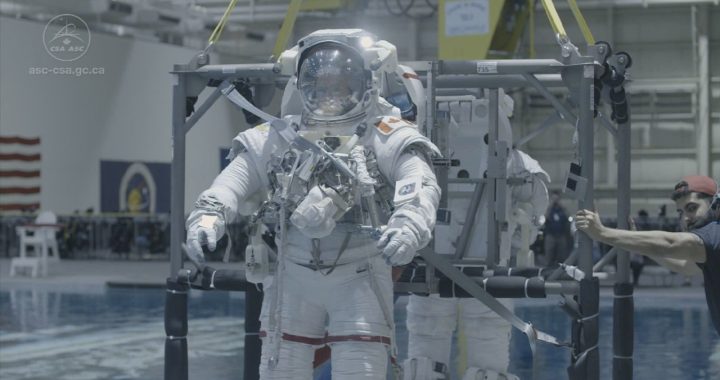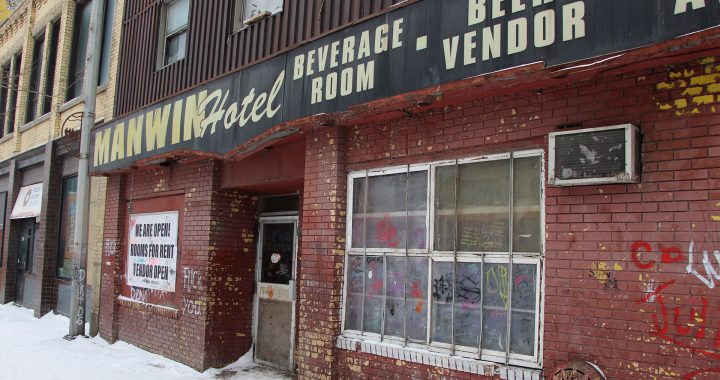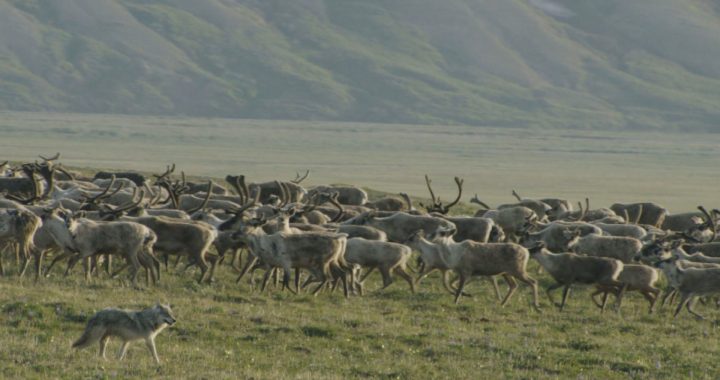Elizabeth McSheffrey, Global News – Emma Wilkie, Institute for Investigative Journalism – Angel Moore, APTN News
Gregg Brewer doesn’t have the luxury of turning his phone off.
His office, an aging water treatment plant in Tobique First Nation, lies just a few hundred feet from the banks of the St. John River, about two hours northeast of Fredericton, New Brunswick.
If something goes wrong, his cell is often the first to ring.
Every day, Brewer makes sure the water flowing through the whirring pipes of the plant is safe for his community’s 2,500 residents to drink.
He tests the chlorine and turbidity levels in the water supply. He records pump times, checks the wells, and logs the consumption of the past 24 hours.
If a water main breaks, he fixes it.
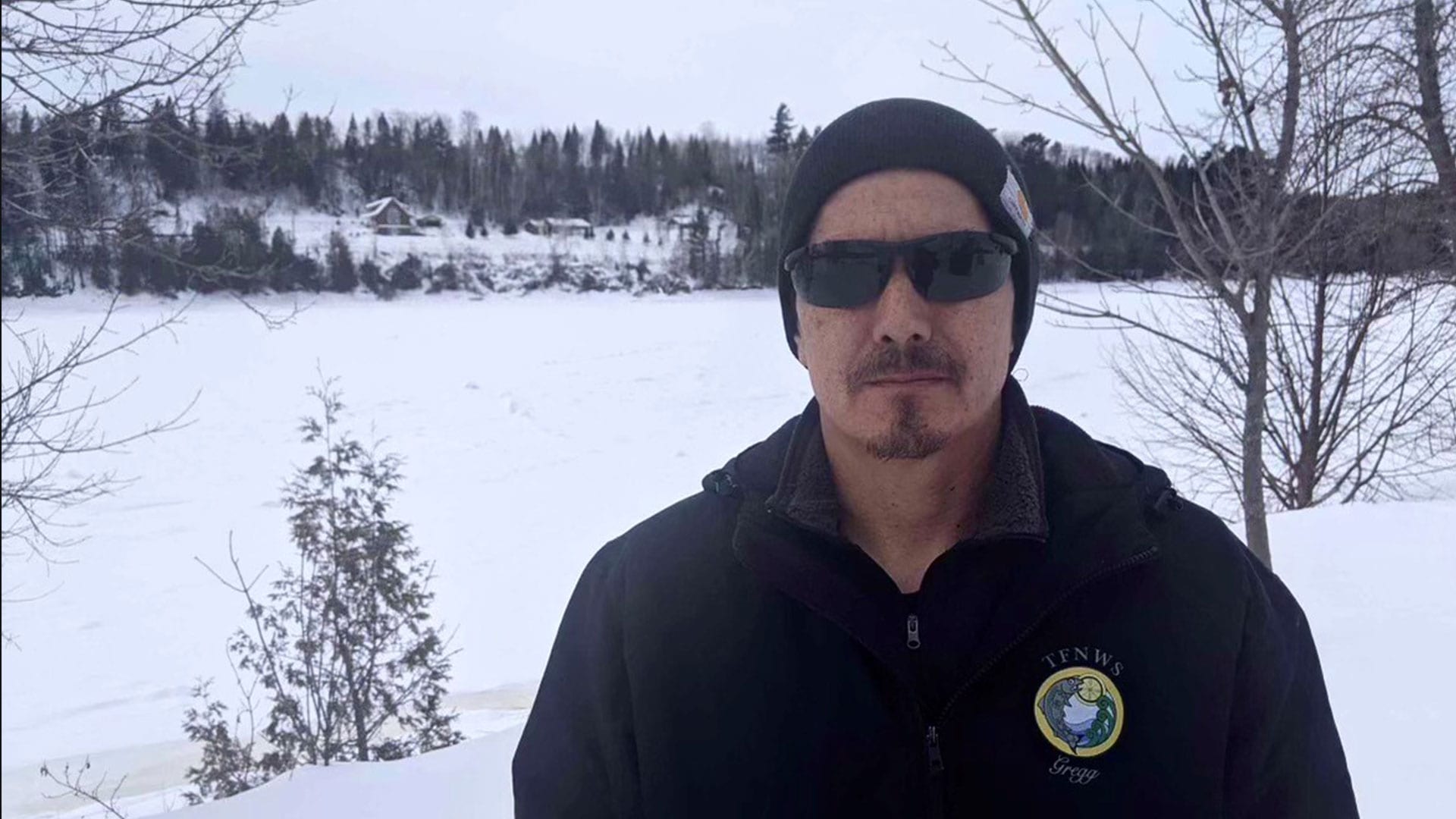
When the injection quill needs cleaning, he cleans it. When a new house is built, he makes sure it’s connected to the system.
It’s a job he’s done for more than a decade; five years as the lead water operator, and seven as the backup water and wastewater operator.
The responsibility is tremendous — essential to his community’s health and safety — but Brewer says he earns less than $20 an hour to do this important work.
He’s also been on call 24 hours a day, seven days a week since he started and has “never” taken a vacation without his phone within arm’s reach.
“It’s stressful, but it’s like anything else — if you do it long enough, you get used to it and you just live your life with it,” he says while sitting in the noisy plant.
It’s not that Brewer works by himself — he has two very experienced, capable teammates who share the weight of the job. But of the three of them, he’s the only one who’s certified.
He’s not alone; an investigation by a consortium including Global News, APTN, and journalism students at the University of King’s College, led by Concordia University’s Institute for Investigative Journalism, has found that First Nations water operators in the Maritimes earn particularly low wages — sometimes less than half of what their counterparts earn in nearby municipalities.
A survey of water treatment plant operators from 122 First Nations nationwide also reveals two-thirds earn less than the median wage of all operators in their province — sometimes close to minimum wage — while being on call around the clock with no one to replace them.
It’s a top-down challenge that begins in Ottawa, where the investigation found federal funding and funding policies for water services on reserves have chronically failed to meet needs, leaving operators like Brewer, and their communities, in the lurch.
First Nations leaders, community members, water operators, academics and engineers who were interviewed for this investigation say the consequences of the existing policies are severe and put communities at risk.
One organization in Atlantic Canada, however, believes it’s found a solution: overhauling a system that allows the federal government to control water management on reserves and giving First Nations full authority to oversee their own infrastructure.
Overworked and underpaid
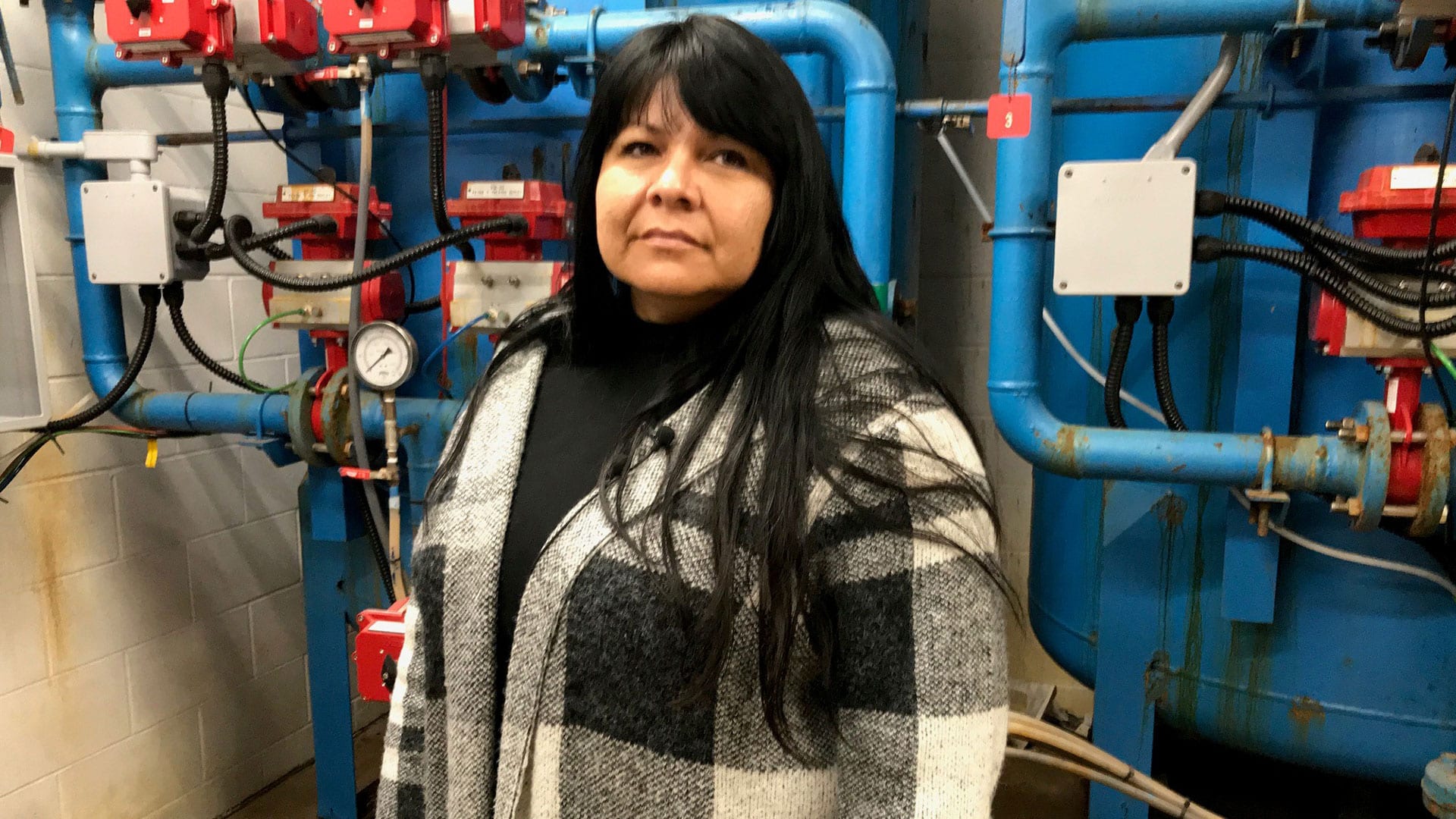
“I did it for probably 15 years by myself, then I started getting help,” says Peter Macleod, primary water operator for Annapolis Valley First Nation in southwestern Nova Scotia.
MacLeod has worked at his community’s water treatment plant for more than 20 years. It serves about 300 permanent residents — all of whom, he says, “love the water.”
Like Tobique First Nation in New Brunswick, Annapolis Valley First Nation has no notable water quality issues, and like Brewer, MacLeod is on call every hour of every day to keep it that way.
For that task, he makes around $13 per hour — compensation he doesn’t think is fair “whatsoever.”
The sentiment is shared by another Indigenous water operator in Nova Scotia, who asked to remain anonymous for fear of upsetting his community.
He earns roughly $15 per hour, about half of what the unionized water operators are paid at Halifax Water.
That’s while serving in the dual role of wastewater operator — a job that’s usually done by a separate person. This water operator has done both jobs for more than a decade.
“I take what I get,” he says.
George Snyder, primary water operator for Eel River Bar First Nation in New Brunswick, says at $25 an hour, he makes a fair wage — until he accounts for unpaid overtime.
Even on vacation, “If the phone rings I got to go. …I’m the only guy who knows what’s going on.”
When there’s a problem, it’s usually the pump stations, he says, and that can bring him back to work when he’s off the clock up to twice a week.
He hears Indigenous water operators elsewhere in Canada are “in the same boat.”
“When you go to these meetings or conventions… a lot of these guys figure they’re not up to snuff — fair — being paid like everybody else is,” Snyder explains. “That’s the biggest thing you hear if you talk to some of these First Nations.”
Seeking greener pastures
Low salaries and high stress levels are a problem for First Nations operators across the country. Sometimes, it drives them away from their communities, making retention of qualified people a challenge.
“I know that our operator has been approached many times by different municipalities and Halifax Water to go work, and he would be making at least a 50 per cent increase,” says Rhonda Knockwood, director of operations for Sipekne’katik First Nation in mainland Nova Scotia.
“That’s a concern.”
Sipekne’katik’s water operator — Knockwood’s husband — is approaching retirement age, and the community is working on a “succession plan.”
“Even with the current rate that we pay, we have to be able to find ways to compensate the current and future operators in that position,” she says.
It’s a challenge faced by Deon Hassler, a former water operator for Carry the Kettle Nakoda Nation, who now trains other operators in Saskatchewan as an employee of the File Hills Qu’Appelle Tribal Council.
“I’ve got about five operators that want to retire and we’re trying to find some new people that are interested in doing (the job). It’s not easy,” he says.
“We had some good experiences in a couple of the communities, but when they see the operator’s salary, again, it’s not very encouraging for them to stick around.”
Chris Luke Jr., who grew up in Yaqan Nukiy Lower Kootenay Indian Band in British Columbia, says he’s already been offered a significant raise to be the water operator for the nearby Town of Creston. While declining to reveal his salary, he says he’s “way underpaid” in his current role.
“I have thought about (leaving) for sure,” he admits. “The lure of big money and having a nice service truck, being able to do what I do, has always interested me.
“…But just leaving my home community — like, currently, I’m the boss here, I do run the system and there’s a lot of pride in that.”
Chronic underfunding in Ottawa
The federal government has known for years that it’s underfunding operations and management (O&M) of water and wastewater systems in First Nations communities.
O&M budgets cover water operators’ wages, as well as the costs of replacement parts, chemicals used in water treatment, electricity and inspections.

First Nations band councils, which determine operator salaries, are given a lump sum to pay not only for the upkeep of water and wastewater systems, but that of other infrastructure assets, like roads and schools, as well.
“As a community, we’re very underfunded,” says Sipekne’katik Chief Michael Sack. “Our own source revenue has taken a hit this year, so for that, you know, we have to pick and choose.”
According to Indigenous Services Canada (ISC), federal spending on water and wastewater-related O&M averaged $146 million per year between 2015 and 2018.
In December 2017, however, the Parliamentary Budget Officer estimated the annual need is closer to $361 million, and as high as $419 million if different projections of population growth are used.
An internal ISC presentation from March 2018, shared with the Institute for Investigative Journalism, further revealed roughly $9.7 billion is needed over a decade for operating costs, maintenance and repairs in all kinds of infrastructure on reserves, including water treatment plants.
In Sipekne’katik, Sack says he routinely tops up his O&M budget with the community’s alternative revenue sources, “money that should be going to the people for their needs,” but he doesn’t feel he has a choice.
“It’s overwhelming I guess, to think that something should be more simple and it’s not…I just spend a lot of time thinking of how we can fix this and correct it and make it better for our people.”
The constant cash “scratching,” as Sack calls it, means Sipkne’katik’s sole certified water operator isn’t paid overtime, but receives lieu time instead. He hopes to one day pay that overtime, and give the 27-year career operator a raise, he adds.
“I do believe everyone should make what they’re entitled to make, and if they put the time in, be compensated.”
Indigenous Services Canada Minister Marc Miller agrees, calling the plight of First Nations water operators “unacceptable” in a Jan. 15 interview from Ottawa.
“Let’s look at who those people are, they’re often the pride of their community,” he said. “Why wouldn’t someone go into a different community, often non-Indigenous, where they’re getting paid a heck of a lot more?
“This is perhaps the more important discussion around sovereignty over critical infrastructure, and that includes people, personnel.”
A funding formula, decades old
The financial squeeze is the result of Ottawa’s O&M policy and funding formula, both of which have not been updated since 1998.
ISC has been working with the Assembly of First Nations on a new O&M policy — one that would determine each First Nation’s budget based on what’s needed to maximize their infrastructure assets’ lifespans.
The federal department hoped to implement that policy by April 2019, but that hasn’t happened yet.
Miller says it’s a work in progress.
“There have been immense financial commitments made, but they have to come in the right way,” he explained.
In December, the federal government promised an additional $1.5 billion for water and wastewater management in Indigenous communities, which includes ending boil water advisories in more than 40 First Nations.
Of that funding, $616.3 million will go to O&M over six years, with an additional $114.1 million every year after that. That’s on top of an extra $605.6 million over four years, promised in Budget 2019.
Brewer says more funding would “make things a lot easier for everybody,” as he’s confident the water management budget in Tobique First Nation hasn’t increased since 2010.
“There’s just some work we can’t do, because we don’t have the money to do it,” he explains, putting lift station upgrades, flushing of water mains, main line completion, and additional staff at the top of his wish list.
Contingency funding is reserved for emergencies, he adds, and the slim margins force the band to make a “tough decision” on how O&M money is spent.
He understands, sympathetically, his salary is part of that equation.
In the national investigation’s survey, one in three operators reported challenges accessing the necessary funds to run their plants and distribution systems.
In Shoal Lake Cree Nation in Saskatchewan, O&M manager Mervin Lathlin said local suppliers, at times, have held up shipments of the chemicals needed for water treatment because the community didn’t settle a bill in a timely manner.
On one occasion, he borrowed chemicals from the neighbouring Red Earth Cree Nation to hold him over until he’d finally received his shipment.
“I have to beg to get money,” said Lathlin, adding that shoestring budgets leave First Nations little choice but to “juggle funding around.”
The underfunding of O&M has led to “an infrastructure deficit that is much larger in First Nations communities than (the one that) exists in non-Indigenous communities,” said Kerry Black, an engineering professor at the University of Calgary whose research focuses on sustainable infrastructure in northern and remote communities.
The amount needed for O&M is now “exponentially higher,” she added, because of how much maintenance work hasn’t been done over the years due to lack of funding.
“Taking care of (those assets) every step along the way is a much more efficient process than neglecting it for years on end.”
The first Indigenous-led water authority in Canada
The new Atlantic First Nations Water Authority (AFNWA) strives to ensure no First Nation is caught in that bind by seizing control of water management from the federal government on behalf of its members.
Established in 2018, it’s the first Indigenous-led water authority in Canada, and will serve as the utility provider for at least 13 of 33 First Nations in the region, including Tobique and Elsipogtog in New Brunswick; Membertou and Pictou Landing in Nova Scotia; and Lennox Island in P.E.I.
It’s the product of more than a decade of planning and collaboration between Atlantic Indigenous chiefs, ISC and stakeholder groups, and focuses on sustainable services for “seven generations,” rather than taking it year-by-year, at the mercy of budgets determined in Ottawa.
“We’re not just talking about today’s issue, it’s making sure you put things in place so your grandchildren will also inherit a good system,” says Carl Yates, AFNWA’s interim CEO.
“And there is one thing I can say about First Nations, from what I’ve seen in terms of their tradition — they understand inter-generational equity better than anybody.”
Yates, a former general manager for Halifax Water, knows utilities have assets that can last generations, but such has not been the case for many First Nations, due to funding issues.
In time, he says AFNWA will ensure water in Indigenous communities meets “the highest standards in the land,” and the operator pay scales and training reflect that vision.
In June last year, Indigenous Services Canada contributed $2.5 million to kickstart the AFNWA and signed a historic framework that will allow it to manage water services in its member communities.
The AFNWA’s funding will flow from ISC, but it will have autonomy over how the money is spent. The authority’s studies show nearly $11 million is needed for operation and maintenance annually in the region, yet in 2019, ISC confirms only $4.77 million went to Atlantic Canada First Nations for that purpose.
Yates says he expects the authority will have more funding collectively than its member communities would normally receive on their own.
“We’re going to certainly hold the federal government to the promises that they have made,” he explains, noting that ISC has been very co-operative to date.
“Once we complete our asset management plan and our 10-year capital budget, we will base our ask on that information. We believe in getting good data, good information, and we will make our case.”
The hub and spoke model
For the moment, the AFNWA is based in the Halifax office of the Atlantic Policy Congress of First Nations Chiefs Secretariat, but it will soon have its own space. The goal is to have an Indigenous-led management team assembled by April, and be fully operational by 2022.
It will deliver services through a “hub and spoke” model, with offices located in centralized locations that will serve nearby member communities. Staff, skills and resources will be shared between “hub” offices and their “spoke” First Nations, Yates explains, allowing tired water operators to take actual vacations.
“Right now that’s very difficult for a person who might be the only operator in their community, to get time off,” he says, acknowledging the work-life balance grievance in the Maritimes.
“But more importantly too, (it allows operators) to understand each other’s systems, and to work together to bring their collective knowledge to be more than the sum of their parts.”
Work to assess each community’s infrastructure needs is already underway. It’s a scalable model, Yates says, and the AFNWA hopes to “blaze the trail … that others may follow.”
Time to give First Nations ‘a turn’
The water treatment plant in Tobique First Nation is on its last legs.
It still works, Brewer says, but he describes it as an “old black and white TV” in an era of high-definition smart TVs.
The plant is more than 30 years old, and the construction tender has gone out for its replacement. There’s work being done on the community well too, he adds, and while the stress of the job is always on his mind, Brewer says he’s not going anywhere.
Tobique is his home, it’s where his family lives, and while he knows the system well, he’s always learning something new.
“There comes times when I have my moments where I just throw my hands up and basically want to give up, but I don’t,” he says.
“I guess what keeps me here is just knowing the system well and making sure that the community here has safe drinking water.”
Tobique is a signatory of the AFNWA, and Brewer says he looks forward to truly self-governed Indigenous water management, even though AFNWA is a bit of an experiment.
“Let’s give somebody else a try,” he says at the end of the interview. “Let’s give our own people a try to run things, because we know best. That’s how I see it anyway.”
Clean Water, Broken Promises is a collaborative investigation into obstacles First Nations are encountering during the Trudeau government’s push to ensure that communities are able to deliver clean drinking water to residents. We will be releasing our articles and broadcasts from this series over the coming weeks.
With files from Kaaria Quash (Concordia University), Geneviève Larochelle-Guy (L’Université du Québec à Montréal), Krystal Lewis (First Nations University of Canada), Michael Wrobel, Patti Sonntag (Institute for Investigative Journalism)
Investigative team:
University of King’s College: Nebal Snan, Emma Wilkie (Instructor: Pauline Dakin)
See the full list of “Broken Promises” series credits and more information about the consortium here.
Produced by the Institute for Investigative Journalism, Concordia University.
For tips on this story, please contact the reporters at: iij.tips(at)protonmail.com.








